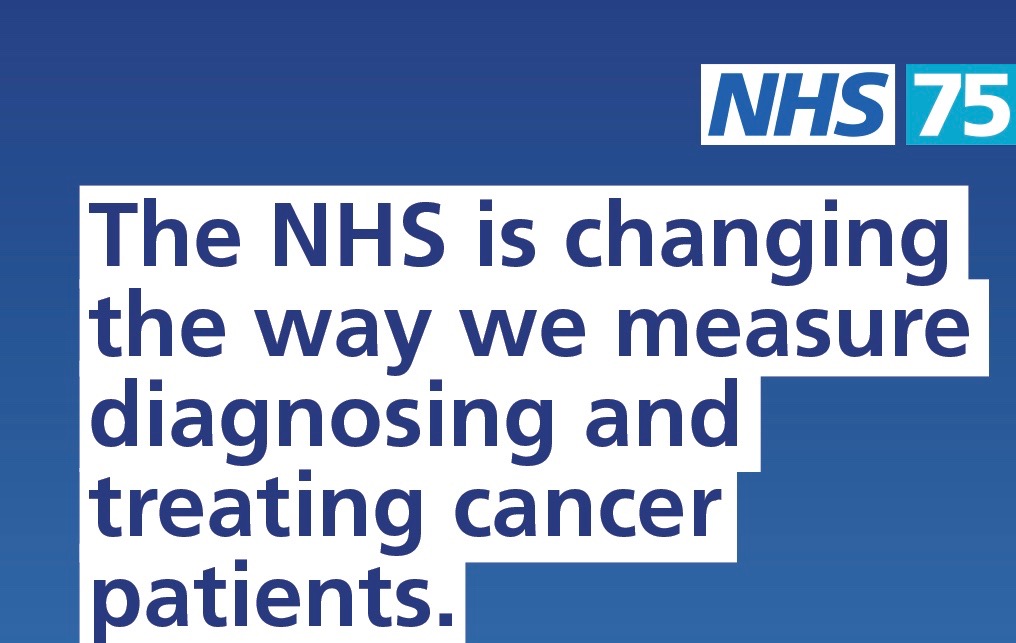Modernising cancer waiting times standards: Information for GPs
From 1 October, the standards measuring waiting times for cancer diagnosis and treatment are being modernised and simplified.
The NHS will move from the 10 different standards in place now to three:
- Faster Diagnosis Standard: a diagnosis or ruling out of cancer within 28 days of referral (set at 75%)
- 31-day treatment standard: commence treatment within 31 days of a decision to treat for all cancer patients (set at 96%)
- 62-day treatment standard: commence treatment within 62 days of being referred or consultant upgrade (set at 85%)
The main changes are:
- Removal of the Two Week Wait standard requiring a first appointment within two weeks
- Combining together the first and subsequent treatment 31-day standards to create one headline performance standard.
- Combining together the Urgent Suspected Cancer GP referral, Urgent Screening and Consultant Upgrade 62-day standards to create one headline performance standard for all patients.
NB: there is no change to the way GPs refer patients onto Urgent Suspected Cancer pathways. The only change is that the NHS will measure how well it is dealing with those referrals by looking at speed of actual diagnosis, not whether the patient has a first appointment within a fortnight.
The data submitted by providers will not change, and until the language in the Cancer Waiting Times dataset is updated, expected to be in 2024/25, GPs and providers should still use the “Priority type – Two Week Wait” data item to record performance against this pathway.
Different practices and providers have different processes in place for checking up on patients they’ve referred to make sure they’ve been seen. In many instances, these won’t need to change. Protocols should be agreed locally between primary and secondary care teams so that GPs know how quickly they should expect patients to be contacted.
While in many cases safety netting has historically followed the two week wait standard, i.e. GPs would follow up a patient, or ask the patient to contact them directly after two weeks if they haven’t been seen, there was never any requirement to align in this way. Local areas should also consider whether they wish to set an expectation that patients should be seen either for their first diagnostic test or their first outpatient appointment even more quickly than the previous two weeks, in order to meet the more ambitious 28 Day Faster Diagnosis Standard.
GP referrals should be made and retrieved through e-RS and first booking made direct from e-RS by providers. The GP will then be able to see the appointment has been booked and is able to put a local escalation process in place if necessary.
It is the responsibility of providers to make sure that the copy in letters generated by e-RS to patients when they are referred onto urgent suspected cancer pathways is updated as necessary.
How you can help your patients
Do your patients have questions about the changes to the cancer waiting times? You can direct them to a quick explainer video by Cancer Research UK, which talks about the new Faster Diagnosis Standard.
Where to access more information
More information is available on the NHS website.
You can also read more information in the Frequently Asked Questions
There is further information on the Cancer Research UK website.
You can also download a one page summary of the changes

Professor Sir Stephen Powis, national NHS medical director said: “The NHS is already catching more cancers at an earlier stage, when they are easier to treat, than ever before and the faster diagnosis standard will allow us to build on this excellent progress – it aims to ensure that patients get the all clear or a definitive diagnosis within 28 days
“The updated ambitions will mean the NHS can be even more focused on outcomes for patients, rather than just appointment times and it’s yet another of example of the NHS bringing cancer care into the modern era of care.
“NHS staff are already embracing the best innovations for the benefit of patients and these streamlined measures support newer ways of testing and will allow us to continue to make the most of the latest advances in technology.”
